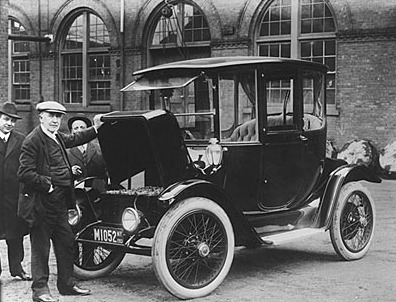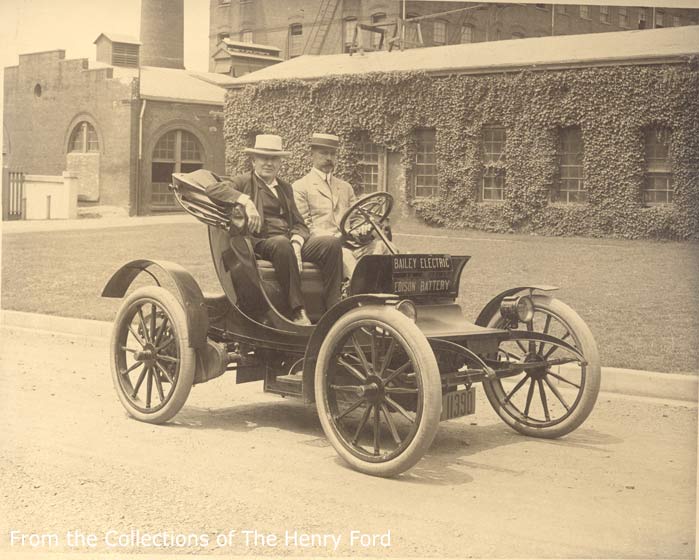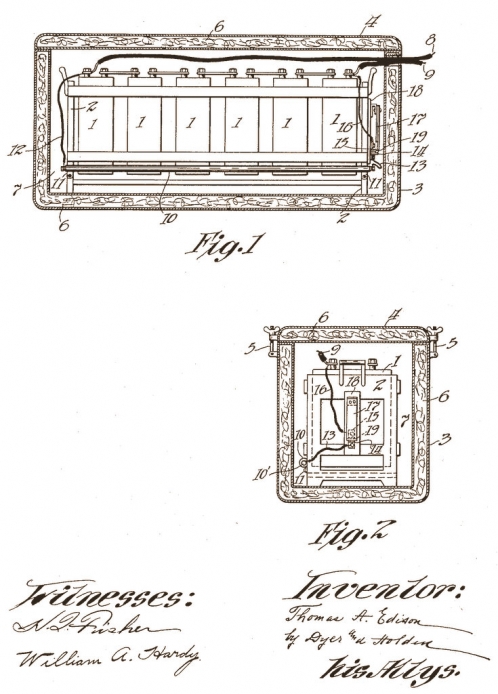Mr. Weir Believes He Has Solved a Great Problem
He Has Found, He Says, Long Sought Qualities of Lightness and Durability
He Has Found, He Says, Long Sought Qualities of Lightness and Durability
It's not difficult to imagine the above article title and subtitles announcing yet another introductory article on the topic of EEStor Inc. But what if I told you, you could replace the name Weir with Edison and have the beginnings of a New York times article written 108 years ago on a new battery Thomas Edison had invented? Mildly interesting? What if I told you that at the time of the writing the properties of the new battery were already "long sought after" and considered as revolutionary as the "incandescent light." Not bad, you say? Sit down, there's more....much much more.

On May 23, 1901, a New York Times article was published covering the reading of a paper at an annual meeting of the American Institute of Electrical Engineers. The reader, A.J. Kennelly announced the invention of a new battery by Thomas Edison and described all of it's advantages in comparison to the existing batteries of the day (which were lead acid believe it or not): not only would Edison's battery be two to three times lighter and more durable, it would charge in 3.5hrs instead of the standard 7.5 to 8 hrs of it's competitors. They would also work better in cold weather. Yes, but what about capacity you ask? Remarkably, an example given over a century ago was that of the range of an automobile (No, I'm not making this up). At the time, the longest known distance a battery powered vehicle had traveled was 50 miles. It was claimed that Edison's new battery would double that range to 100 miles. (Hello, GM Volt crazies).

Not surprisingly, the other applications for Edison's new battery were transportation related. The New York Times report read:
"The advantages of the new invention as set forth by an engineer are so comprehensive that it was predicted that a new art of electrical propulsion and navigation would result. Among the possibilities is a new electric street car, the doing away with the present trolley system, and the substitution of a car supplied with power by storage battery. Likewise, owing to durability and to the cheapening of the batteries and the facility of their mechanism, it is predicted that electric light will be cheapened and that electric power in time may supersede that of steam in many factories now dependent upon the steam boiler. "

If you're a regular at TheEEStory.com and you are experiencing a strange little feeling you can't put your finger on, consider this. The century old article states that Edison's battery was "passed the experimental stage and has been tested and proved in actual practice to such an extend that a factory is about to be built to manufacture the batteries for commercial purposes." According to the article, Edison made the claim that his battery was "theoretically indestructible" because in tests they had charged it in reverse and restored it to full capacity with a regular charge. This should sound similar to Richard Weir's claims about the indestructibility of the EESU -- and how it will outlast the equipment to which it is attached -- with component parts of the EESU having been apparently tested (charged/discharged) to more than a million cycles. And if that is not similar enough to EEStor, the reporter also captured some stealth with Edison having "declined to discuss the commercial advantages of the new invention beyond saying that he had purchased the old Hayden Mill in Genridge, about two miles from West Orange, where he will take immediate possession and begin at once the manufacture of the new batteries."
The reporter added, "He said he would organize the Edison Storage Battery Company and would retain absolute control of the business. "
Unlike the reception EEStor has received from their electric industry peers, Edison received immediate praise from the the Electrical Review:
"Mr Edison has produced no invention of broader utility in the electrical field since incandescent lighting was evolved from the busy brain of the same pioneer of industry. It is hard to foresee all the meaning of this improvement. But we may look a little way and see the noiseless city, the suppression of the horse, and the automobile a factor of economic importance in general transportation. The perfected battery means the solution of many difficult traction problems, the betterment of electric lighting, and the foundation of the new art of electric navigation. Electric tugboats will give new life to our canals, and with electric ferryboats will revolutionize our harbors. Electric torpedo-boats of swiftness and secrecy will make present naval armaments of doubtful protection."

Military silent applications? Check. Noiseless cities? Check. Renewable energy. Check. A difficult to predict but certain revolutionary impact? Check, check, check. Edison's battery advance was the EEStory of his day. But he had the credibility of the light bulb under his belt, an invention so much less complicated than the data storage disk technologies invented by Nelson and Weir a decade ago when they created a hard disk able to spin at 50,000 RPM's which could survive a disk crash of the arm into the platter, a capability still not commercially available (after all, if disks didn't fail, how would Seagate or Western Digital sell more of them?)
 Thomas Edison c. 1912.
Thomas Edison c. 1912.As for Edison, at the time of the New York Times article, he was only willing to say the following:
"I have concerned myself almost solely with the improvement of the new battery for at least a year. I began the experiments that have led up to the invention a number of years ago. Ever since last August I have confined myself exclusively to the new battery, trying it out in practice under all sorts of conditions of temperature and road traffic--for the batteries have been tried on heavy work. I have always been more interested in the solution of the problem of furnishing a power to do the useful and heavy work rather than to provide means for pleasure vehicles, and it is in the direction of heavy trucking especially that I expect the new battery will work a revolution."
Over the next several years, Edison went on to slowly introduce his battery into various applications as he predicted. According to The Edison Papers, a Rutgers Univ project, the battery became Edison's most successful project in later life.

Edison demonstrating an electric lawn mower.
But in 1911, 10yrs after making his initial statements about the battery, Edison was finally prepared to make a real EEStor-caliber claim. At a national convention of electric power companies, Edison was asked about his battery business. Quoting again from a New York Times article (this one dated June 11, 1911):
"I have done far better than that now, and nothing has come out about it. I have perfected a battery which can be recharged in three or four minutes and which will run fifty or sixty miles without being recharged. The trouble with the first battery was that the recharging took a long time. When charged a car would run all day, but then it took the better part of the night to recharge it and get it ready for the next day. But I have done away with all that. I have now a battery which can be put into a suit case, it is so small and light, and it can run a car, truck automobile, or vehicle of any kind until the power is used up and then recharged in less than 3 minutes, ready for service as before."
Apparently, this script has played out once before a hundred years ago. So what happened to all of this great Edison battery technology? First, some of Edison's batteries did in fact display a certain measure of indestructibility having remained functional over 70 years! This lead to the battery being known as "too good" since it could outlast some of the equipment it was intended to power, which from a manufacturing point of view is economically unattractive. In 1960, the Edison Battery Storage business division was sold to the company now known as Exide Technologies, a company which claims to be nothing less than the largest and most global maker of....cover your ears.......lead acid batteries. Perform a keyword search for 'Edison' on their website and you will get no hits. The nickel-iron chemistry Edison based his battery on is actually still in use in China among other places, perhaps because they are far less toxic than their lead acid counterparts. Incidently, Exide Technologies was awarded $34Mil to advance lead acid batteries in the recent DOE advanced battery stimulus funding. (They spent $60K on lobbying in 2009 and some of their execs have made several donations to the Republican National Committee. )

So if the batteries did in fact perform as Edison described, how come we have never heard of the quick charge claim attributed to him by the New York Times article? To find out, I contacted leading scholars familiar with the history of electric vehicles and Thomas Edison. I pointed out the article where the claim was documented and hoped for a quick solution. The answer is that it is unknown but worthy of further investigation. HHhhmm. That sounds familiar. :-)
Note: I will not be starting a website devoted to the quest to uncover the truth about the Edison quick charge battery. :-) But I challenge you to solve it!
Many Images Courtesy of National Park Service.
Special thanks to a few anonymous editors! (sorry my formatting is so unprofessional!)
